 W
W'En Esur, also En Esur or Ein Asawir is an ancient site located on the northern Sharon Plain, at the entrance of the Wadi Ara pass leading from the Coastal Plain further inland. The site includes an archaeological mound (tell), called Tel Esur or Tell el-Asawir, another unnamed mound, and two springs, one of which gives the site its name. During the Early Bronze Age, around 3000 BCE, a massive fortified proto-city with an estimated population of 5,000 to 6,000 inhabitants existed there. It was the largest city in the region, larger than other significant sites such as Megiddo and Jericho, but smaller than more distant ones in Egypt and Mesopotamia. The city was discovered in 1977, but its massive extent was realized only in 1993. A major excavation between 2017 and 2019 ahead of the construction of a highway interchange exposed the city's houses, streets and public structures, as well as countless artifacts including pottery, figurines and tools. Archaeologists announced its discovery in 2019, calling it the "New York of the Early Bronze Age".
 W
WAbu Ghosh is an Arab-Israeli local council in Israel, located 10 kilometers (6.2 mi) west of Jerusalem on the Tel Aviv–Jerusalem highway. It is situated 610–720 meters above sea level. It takes its current name from the dominant clan inhabiting the town, while the older Arabic name used to be Qaryat al-'Inab.
 W
WAchshaph was a royal city of the Canaanites, in the north of Canaan. The name means "sorcery".
 W
WChezib, also known as Achziv of Judah, is a biblical place-name associated with the birth of Judah's son, Shelah (Genesis 38:5), corresponding to the Achziv of the Book of Joshua (15:44), a town located in the low-lying hills of the plain of Judah, known as the Shefela. In I Chronicles 4:22, the town is rendered as Chozeba. The place is now a ruin.
 W
WAdullam is an ancient ruin, formerly known by the Arabic appellation ʿAīd el Mâ, built upon a hilltop overlooking the Elah Valley, straddling the Green Line between Israel and the West Bank. In the late 19th century, the town was still in ruins. The hilltop ruin is also known by the name Khurbet esh-Sheikh Madkour, named after Madkour, one of the sons of the Sultan Beder, for whom is built a shrine (wely) and formerly called by its inhabitants Wely Madkour. The hilltop is mostly flat, with cisterns carved into the rock. The remains of stone structures which once stood there can still be seen. Sedimentary layers of ruins from the old Canaanite and Israelite eras, mostly potsherds, are noticeable everywhere, although olive groves now grow atop of this hill, enclosed within stone hedges. The villages of Aderet, Aviezer and Khirbet al-Deir are located nearby. The ruin lies about 3 kilometers south of Moshav Neve Michael. The area around ancient Adullam between Bet Shemesh and Bet Guvrin was established in 1957 as "Adullam Region" and settled since then.
 W
WAi was a Canaanite city. According to the Book of Joshua in the Hebrew Bible, it was conquered by the Israelites on their second attempt. The ruins of the city are popularly thought to be in the modern-day archeological site Et-Tell.
 W
WAl-Haditha was a Palestinian village in the Ramle Subdistrict. It was located 8 km northeast of Ramla, on the bank of Wadi al-Natuf. The site, now known as Tel Hadid, has yielded significant archaeological remains from many periods. Al-Haditha was depopulated during the 1948 Arab-Israeli War on July 12, 1948, under the first stage of Operation Dani.
 W
WAshkelon or Ashqelon, also known as Ascalon, is a coastal city in the Southern District of Israel on the Mediterranean coast, 50 kilometres (31 mi) south of Tel Aviv, and 13 kilometres (8.1 mi) north of the border with the Gaza Strip. The ancient seaport of Ashkelon dates back to the Neolithic Age. In the course of its history, it has been ruled by the Ancient Egyptians, the Canaanites, the Philistines, the Assyrians, the Babylonians, the Greeks, the Phoenicians, the Hasmoneans, the Romans, the Persians, the Arabs and the Crusaders, until it was destroyed by the Mamluks in 1270.
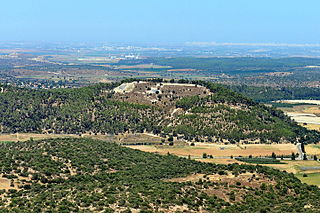 W
WAzekah was a town in the Shephelah guarding the upper reaches of the Valley of Elah, about 26 km (16 mi) northwest of Hebron. The current tell (ruin) by that name, also known as Tell Zakariya, has been identified with the biblical Azekah, dating back to the Canaanite period. Today, the site lies on the purlieu of Britannia Park. According to Epiphanius of Salamis, the name meant "white" in the Canaanite tongue. The tell is pear shaped with the tip pointing northward. Due to its location in the Elah Valley it functioned as one of the main Judahite border cities, sitting on the boundary between the lower and higher Shephelah. Although listed in Joshua 15:35 as being a city in the plain, it is actually partly in the hill country, partly in the plain.
 W
WBeit Jala is a Palestinian Christian town in the Bethlehem Governorate of the West Bank. Beit Jala is located 10 km south of Jerusalem, on the western side of the Hebron road, opposite Bethlehem, at 825 meters (2,707 ft) altitude. In 2017, Beit Jala had 13,367 inhabitants according to the Palestinian Central Bureau of Statistics. About 80% of the population were Christians and about 20% Muslims.
 W
WBeit Shemesh is a city located approximately 30 kilometres (19 mi) west of Jerusalem in Israel's Jerusalem District, with a population of 124,957 in 2019.
 W
WBeitin is a Palestinian village in the Ramallah and al-Bireh Governorate in the central West Bank, located 5 kilometers (3.1 mi) northeast of Ramallah along the Ramallah-Nablus road. The Palestinian village of Dura al-Qar' and Ein Yabrud lie to the north, Rammun to the east, Deir Dibwan to the southeast and al-Bireh to the southwest. The Israeli settlement of Beit El is northwest of Beitin.
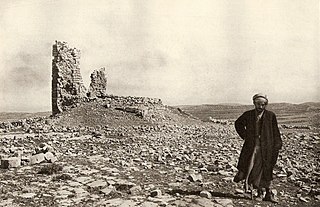 W
WBeth-Zur is a biblical site of historic and archaeological importance in the mountains of Hebron in southern Judea, now part of the West Bank. Beth Zur is mentioned several times in the Hebrew Bible and the writings of the Roman Jewish historian Josephus. The Battle of Beth-Zur took place here in 164 BCE.
 W
WEin Gedi, also spelt En Gedi, meaning "spring of the kid", is an oasis and a nature reserve in Israel, located west of the Dead Sea, near Masada and the Qumran Caves. Ein Gedi was listed in 2016 as one of the most popular nature sites in the country. The site attracts about one million visitors a year.
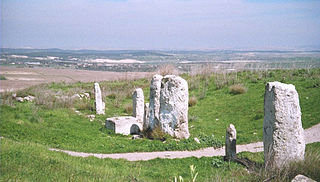 W
WGezer, or Tel Gezer, in Arabic: تل الجزر – Tell Jezar or Tell el-Jezari, the site of the abandoned Arab village of Abu Shusheh, is an archaeological site in the foothills of the Judaean Mountains at the border of the Shfela region roughly midway between Jerusalem and Tel Aviv. It is now an Israeli national park. In the Hebrew Bible, Gezer is associated with Joshua and Solomon.
 W
WGibeon was a Canaanite and Israelite city north of Jerusalem. According to Joshua 10:12 and Joshua 11:19, the pre-conquest inhabitants of Gibeon, the Gibeonites, were Hivites; according to 2 Samuel 21:2 they were Amorites. The remains of Gibeon are located on the southern edge of the Palestinian village of al-Jib.
 W
WHalhul Arabic: حلحول, transliteration: Ḥalḥūl, is a Palestinian city located in the southern West Bank, 5 kilometres (3.1 mi) north of Hebron in the Hebron Governorate. The town, bordered by Sa'ir and Ash-Shuyukh to the east, Beit Ummar and Al-Arroub refugee camp to the north, and Kharas and Nuba westwards, is located 916 m above sea level, and is the highest inhabited place in Palestine. According to the Palestinian Central Bureau of Statistics, the city had a population of 22,108 mostly Muslim inhabitants in 2007.
 W
WHama is a city on the banks of the Orontes River in west-central Syria. It is located 213 km (132 mi) north of Damascus and 46 kilometres (29 mi) north of Homs. It is the provincial capital of the Hama Governorate. With a population of 854,000, Hama is the fourth-largest city in Syria after Damascus, Aleppo and Homs.
 W
WTel Hazor, also Chatsôr, translated in LXX as Hasōr, identified at Tell Waqqas / Tell Qedah el-Gul, is an archaeological tell at the site of ancient Hazor, located in Israel, Upper Galilee, north of the Sea of Galilee, in the northern Korazim Plateau. In the Middle Bronze Age and the Israelite period, Hazor was the largest fortified city in the country and one of the most important in the Fertile Crescent. It maintained commercial ties with Babylon and Syria, and imported large quantities of tin for the bronze industry. In the Book of Joshua, Hazor is described as “the head of all those kingdoms”.
 W
WHebron is a Palestinian city in the southern West Bank, 30 kilometres (19 mi) south of Jerusalem. Nestled in the Judaean Mountains, it lies 930 metres (3,050 ft) above sea level. The largest city in the West Bank, and the second largest in the Palestinian territories after Gaza, it has a population of over 215,000 Palestinians (2016), and seven hundred Jewish settlers concentrated on the outskirts of the Old City of Hebron. It includes the Cave of the Patriarchs, which Judeo-Christian and Islamic traditions all designate as the burial site of three key patriarchal/matriarchal couples. Judaism ranks Hebron the second-holiest city after Jerusalem, while some Muslims regard it as one of the four holy cities.
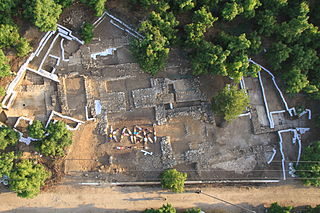 W
WTel Kabri, or Tell al-Qahweh, is an archaeological tell containing one of the largest Middle Bronze Age Canaanite palaces in Israel, and the largest such palace excavated as of 2014. Kabri is named for the abundance of its perennial springs the presence of which has led to the site's occupation and use as a water source from the Pottery Neolithic (PN) period to the present day. Located in the Western Upper Galilee, the site was at the height of its power in the Middle Bronze, controlling much of the surrounding region. Kabri declined as a local power at the end of the Middle Bronze, but the site continued to be occupied at times, on a much reduced level, up until the 1948 Arab-Israeli War.
 W
WKadesh, or Qadesh, was an ancient city of the Levant on or near the headwaters or a ford of the Orontes River. It was of some importance during the Late Bronze Age and is mentioned in the Amarna letters. It was the site of the Battle of Kadesh between the Hittite and Egyptian empires in the 13th century BC.
 W
WKafr 'Ana' was a Palestinian town located 11 kilometers (6.8 mi) east of Jaffa, built on the ancient site of Ono. In 1945, the town had an estimated population of 2,800 Arabs and 220 Jews. Captured by the pre-state Jewish forces of the Alexandroni Brigade prior to the outbreak of the 1948 Arab–Israeli War, it was depopulated. Today, the old village site lies within the confines of the modern Israeli city of Or Yehuda.
 W
WKhirbet et-Tibbâneh (Arabic: خربة التبانة), sometimes referred to by historical geographers as the Timnah of Judah, is a small ruin situated on a high ridge in the Judaean mountains, in the Sansan Nature Reserve, 622 metres (2,041 ft) above sea level, about 3 kilometers east of Aviezer and ca. 7 kilometers southeast of Bayt Nattif.
 W
WLavnin (Hebrew: חורבת לבנין)(Arabic: خربة تل البيضة), is a late Bronze Age archaeological site situated in Israel's Adullam region, rising some 389 metres (1,276 ft) above sea level. The site lies 8 kilometres (5.0 mi) northwest of Beit Gubrin, and about 1 kilometer west-north-west of Khirbat Umm Burj, directly south of Nehusha.
 W
WTel Maresha is the tell of the biblical Iron Age city of Maresha, and of the subsequent, post-586 BCE Idumean city known by its Hellenised name Marisa, Arabised as Marissa (ماريسا). The tell is situated in Israel's Shephelah region, i.e. in the foothills of the Judaean Mountains. It was first excavated in 1898-1900 by the British archaeologists Bliss and Macalister on behalf of the Palestine Exploration Fund and again after 1989 by Israeli archaeologist Amos Kloner on behalf of the Israel Antiquities Authority. Most of the artifacts of the British excavation are to be found today in the Istanbul Archaeology Museums.
 W
WTel Megiddo is the site of the ancient city of Megiddo, the remains of which form a tell, situated in northern Israel near Kibbutz Megiddo, about 30 km south-east of Haifa. Megiddo is known for its historical, geographical, and theological importance, especially under its Greek name Armageddon. During the Bronze Age, Megiddo was an important Canaanite city-state and during the Iron Age, a royal city in the Kingdom of Israel.
 W
WNablus is a city in the northern West Bank, approximately 49 kilometers (30 mi) north of Jerusalem, with a population of 126,132. Located between Mount Ebal and Mount Gerizim, it is the capital of the Nablus Governorate and a Palestinian commercial and cultural center, home to An-Najah National University, one of the largest Palestinian institutions of higher learning, and the Palestinian Stock Exchange.
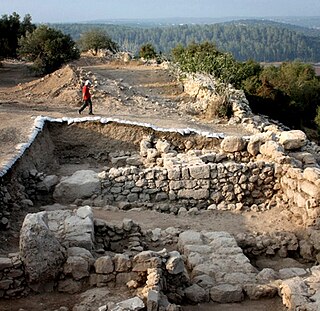 W
WKhirbet Qeiyafa is the site of an ancient fortress city overlooking the Elah Valley and dated to the first half of the 10th century BCE. The ruins of the fortress were uncovered in 2007, near the Israeli city of Beit Shemesh, 30 km (20 mi) from Jerusalem. It covers nearly 2.5 ha and is encircled by a 700-meter-long (2,300 ft) city wall constructed of stones weighing up to eight tons each. Excavations at site continued in subsequent years. A number of archaeologists, mainly Yosef Garfinkel and Saar Ganor, have claimed that it might be the biblical city of Sha'arayim, because of the two gates discovered on the site, or Neta'im and that the large building at the center is an administrative building dating to the reign of King David, where he might have lodged at some point. This is based on their conclusions that the site dates to the early Iron IIA, ca. 1025–975 BCE, a range which includes the biblical date for the Kingdom of David. Others suggest it might represent either a North Israelite, Philistine or Canaanite fortress, a claim rejected by the archaeological team that excavated the site. The team's conclusion that Khirbet Qeiyafa was a fortress of King David has been criticised by some scholars, but has been validated by the Israel Antiquities Authority.
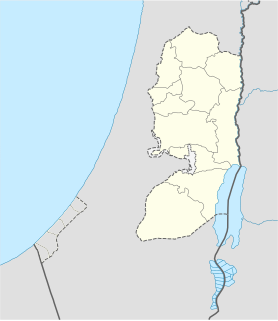 W
WShechem, also spelled Sichem, was a Canaanite city mentioned in the Amarna letters, and is mentioned in the Hebrew Bible as the first capital of the Kingdom of Israel. According to Joshua 21:20–21 it was located in the tribal territorial allotment of the tribe of Ephraim. Traditionally associated with Nablus, it is now identified with the nearby site of Tell Balata in Balata al-Balad in the West Bank.
 W
WSokho is the name given to two ancient towns in the territorial domain of Judah as mentioned in the Hebrew Bible, in what is now the West Bank. Both towns were given the name Shuweikah in Arabic, a diminutive of the Arabic shawk, meaning "thorn". The remains of both have since been identified.
 W
WThe Tall Zira'a is an archaeological tell in Jordan. Surveys and geophysical investigations showed the site's great potential for excavations.
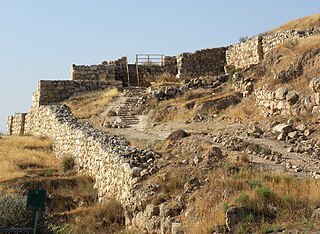 W
WTel Lachish, known in Arabic as Tell ed-Duweir, is the site of an ancient Near Eastern city, now an archaeological site and an Israeli national park. The Palestinian village of Qobebet Ibn ‘Awwad was also formerly located near the Tel.
 W
WTel Yokneam, also spelled Yoqne'am or Jokneam, is an archaeological site located between the modern city of Yokneam Illit and the town of Yokneam Moshava. It was known in Arabic by a variant name, Tell Qamun, believed to be a corruption of the Hebrew name. The site is an elevated mound, or tel, spanning around 40 dunams and rising steeply to a height of 60 meters (200 ft). With a few brief interruptions, Yokneam was occupied for 4,000 years, from the Middle Bronze Age to the Ottoman Empire.
 W
WTell Ashtara is an archaeological mound south of Damascus. The Bronze Age city that once stood here was mentioned in the Amarna letters correspondence of 1350 BC as Aštartu, and is usually identified with the Biblical city of Ashtaroth.
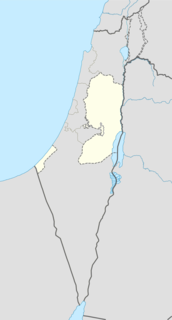 W
WTell es-Sultan, also known as Tel Jericho or Ancient Jericho, is a UNESCO-nominated archaeological site in the West Bank, located adjacent to the Ein as-Sultan refugee camp two kilometres north of the centre of Jericho. The tell was inhabited from the 10th millennium BCE, and has been called "the oldest town in the world", with many significant archaeological finds; the site is also notable for its role in the history of Levantine archaeology.
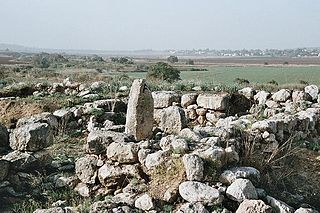 W
WTimnath or Timnah was a Philistine city in Canaan that is mentioned in the Hebrew Bible in Judges 14 and in connection with Samson. Modern archaeologists identify the ancient site with a tell lying on a flat, alluvial plain, located in the Sorek Valley ca. 7 kilometres (4.3 mi) north-west of Beit Shemesh, near moshav Tal Shahar in Israel, known in Hebrew as Tel Batash or Teluliot Batashi (plural), and in Arabic as Tell Butashi or Teleilat Batashi (plural). The site is not to be confused with neither the as yet unidentified Timna from the hill country of Judah, nor with the southern copper-smelting site of Timna in the Arabah near Eilat.
 W
WTirzah was a town in the Samarian highlands northeast of Shechem; it is generally identified with the site of Tell el-Far'ah (North), northeast of modern city of Nablus, in the immediate vicinity of the Palestinian village of Wadi al-Far'a and the Far'a refugee camp, although Conder and Kitchener suggested that the ancient city may have actually been where Tayasir is now located, based on its phonemes. Conversely, biblical researchers, Robinson and Guérin, suggested identifying the town with Talluza.
 W
WYavne or Yavneh is a city in the Central District of Israel. In many English translations of the Bible, it is known as Jabneh. During Greco-Roman times, it was known as Jamnia ; to the Crusaders as Ibelin; and before 1948, as Yibna.
 W
WZanoah is a moshav in central Israel. Located adjacent to Beit Shemesh, it falls under the jurisdiction of Mateh Yehuda Regional Council. In 2019 it had a population of 524.